Introduction
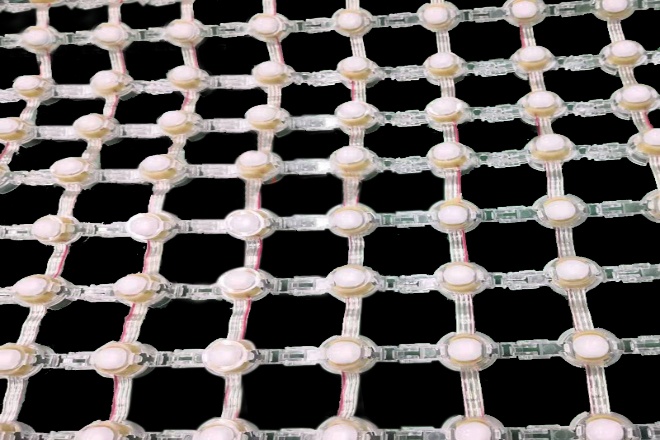
With the development of display devices to this day, you may have seen many display devices, including point light sources.
For those who don’t know much about point light sources, they may have questions: Do point light sources belong to LED displays? The answer is yes. For this reason, please read the article.
1. What is a point light source?
Point light sources, in simple terms, are those lights that look like they are emitted from a very small point. Imagine that you hold a flashlight in your hand and turn it on in the dark. The small bulb is like a point light source, which radiates light all around.
Of course, in real life, there is no light source as small as a real “point,” but when we say that a light source is a point light source, it means that its size is very small relative to the range covered by its light emission, and it can be roughly regarded as a point.
1). Types of point light sources
When it comes to the types of point light sources, you may first think of those old-fashioned incandescent bulbs, which were once the most common lighting tools in our homes. However, with the advancement of technology, LED point light sources have gradually become mainstream. LED point light sources have many advantages:
- Energy saving:
Compared with traditional incandescent bulbs, LEDs can use electricity more efficiently and convert more electricity into light energy instead of heat energy, so they are more energy-saving.
- Long life:
LEDs have a particularly long life, and some can even be used for tens of thousands of hours, which is much more durable than traditional bulbs.
- High brightness:
LED point light sources are not only bright but also have good light quality and bright colors and look particularly comfortable.
- Environmental protection:
LEDs do not contain harmful substances such as mercury, so they are very environmentally friendly.
- Adjustability:
Another advantage of LEDs is that they are easy to control. You can change their brightness and color by adjusting the current or voltage, which is very flexible.
2. What is the relationship between point light sources and LED displays?
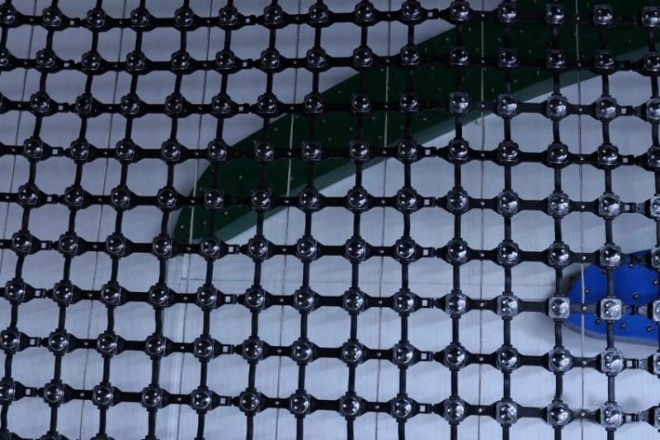
In the world of LED displays, point light sources are like those small magic bulbs, which are the basic units that make up the entire large-screen display.
You can imagine that these point light sources are like neatly arranged little stars, shining in the dark at a certain distance and weaving together a series of gorgeous pictures.
Speaking of LED point light source screens, the name may sound a bit professional, but in fact, it is a display screen that uses point light source technology. The dot pitch of this display is relatively large, usually between 30mm and 100mm, and some are even larger.
So, you can also think of it as a “special LED display with super large pitch.” This screen uses LED surface-mount lamp beads as the light source, and there is also a microcomputer chip hidden inside, which can be programmed and controlled at will to create a variety of lighting effects.
When you see multiple LED point light sources arranged together to form a dot matrix screen, it is even more magical.
They can create various patterns, texts, and animations, just like playing magic. Such a screen can not only be used for lighting and brightening decoration but also play videos to meet your various needs.
There are more benefits to LED point light source screens than just that. It is also flexible and can be bent and folded at will to adapt to various shapes and scenes. Moreover, its high permeability allows light to penetrate the screen without causing too much burden on the wall or steel structure. Most importantly, it can be installed in a super large area, making your visual experience more shocking.
In addition, an LED point light source is also a new type of decorative lamp. It can not only serve as a supplement to linear light sources and floodlighting but also emit different colors according to needs.
Through programming control, you can achieve full-color effects such as colorful gradients, jumps, scans, and flowing water, making your decoration more colorful. Moreover, LED point light sources are energy-saving and environmentally friendly, stable and flicker-free, with high spectral purity and stable and reliable performance, which really kills two birds with one stone.
3. What are the differences between an LED point light source screen and an ordinary LED display screen?
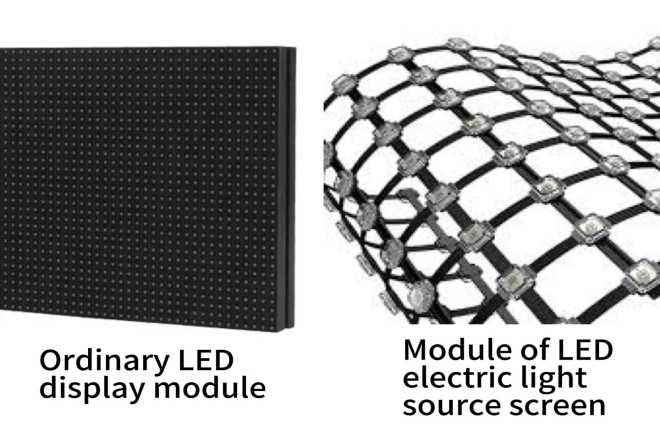
1). Small differences in principle
LED point light source screen is like the stars in the night sky. Each one is a small LED light. They can be controlled individually. They can be lit or extinguished as needed, and they can also change colors!
These “little stars” can be programmed by computer to form various beautiful patterns, such as heart shapes and five-pointed stars, and even play animations. Isn’t it very technological?
Ordinary LED display screens are more like our home TV screens, except that LED lamp beads are used to replace the pixels in the TV. These LED lamp beads are densely arranged together.
By controlling the brightness and color of each lamp bead, clear pictures and videos can be displayed, just like the TV series and movies we usually watch.
2). Big difference in display effect
When it comes to display effects, LED point light source screens pay more attention to creativity and atmosphere.
For example, the glittering signs you see at night markets or the ever-changing light shows on high-rise buildings, many of which are the credit to LED point light source screens. Although their resolution is not high, they can change into various patterns, which makes people shine.
In contrast, ordinary LED display screens pay more attention to the clarity and details of the picture. Whether it is a large advertising screen in a shopping mall or a background screen at a concert, they can clearly show every detail, making people feel as if they are there.
3). Different application scenarios
LED point light source screens are particularly suitable for places where you need to create an atmosphere or show creativity because they can change into various patterns.
For example, if you want to add some decoration to your balcony or want to arrange a romantic lighting background at the wedding scene, LED point light source screens are a good choice.
As for ordinary LED display screens, their application range is even wider. Whether it is commercial advertising, traffic instructions, stage performances, or live broadcasts of sports events, they are inseparable from it. It is like an all-around “display expert” that can shine and heat wherever it is.
4). Little secrets on cost and price
When it comes to cost and price, LED point-light source screens are relatively cheaper. Because its structure is relatively simple and does not require too many high-precision components, the manufacturing cost is relatively low.
Of course, if you want to achieve more complex effects, you may need to spend more money on programming and control systems.
As for ordinary LED display screens, although the display effect is better, the cost is relatively high. After all, more LED lamp beads and more sophisticated manufacturing processes are required to ensure the clarity and stability of the picture. However, considering its wide application and excellent display effect, this cost is worth it.
4. What are the application scenarios of LED point light source screens?
As a type of ultra-large pitch LED display, LED point light source screens have found a wide range of application spaces in many fields with their unique design concept and excellent performance. The following is a detailed description of several typical application scenarios of LED point light source screens:
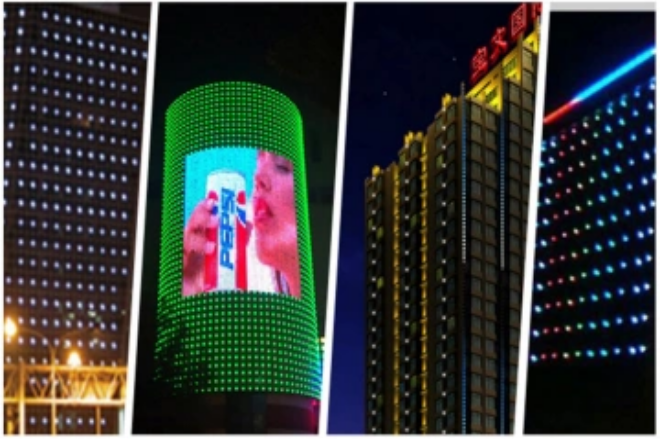
1). Urban landscape and building lighting:
Imagine that when night falls, the exterior walls of high-rise buildings in the city suddenly “come alive.” LED point light source screens, with their ultra-large pitch, high brightness, and colorful colors, put on gorgeous evening dresses for these buildings.
They are not just displaying advertisements or artistic patterns, but more like telling stories about the city, allowing people to feel the culture and vitality of the city while enjoying the beautiful scenery. And those bridges and public facilities, decorated with LED point light screens, have also become lively, like the blood of the city, flowing in the night.
2). Commercial advertising and brand promotion:
In commercial districts, highways, and even crowded squares, you can always be attracted by those eye-catching LED point light screens. They are like the “loud voice” of merchants, using the super-large screen spacing and bright colors to shout your name from a distance, telling you which brand has new activities and which product has discounts.
In shopping malls, these screens have become decoration masters, decorating the walls, ceilings, and atrium spaces in a fashionable and lively way, allowing you to enjoy a visual feast while shopping.
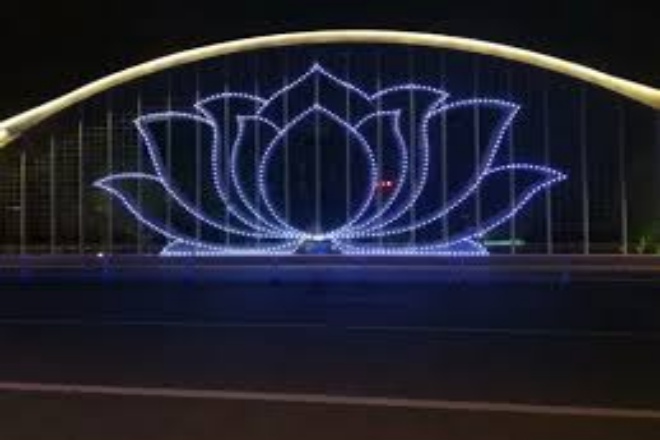
3). Cultural entertainment and stage performances:
When it comes to concerts and concerts, have those cool stage effects already emerged in your mind? That’s right, LED point light screens are the stars of these stages. They can be used as stage backgrounds or side curtains, perfectly combined with live performances, presenting you with a high-definition dynamic visual feast.
In theme parks and amusement parks, these screens are even more interesting. They are used to decorate amusement facilities, increase the fun of interactive games, and let you feel the surprise brought by colorful light and shadow while playing.
Did you know? The flexible characteristics of LED point light source screens also allow them to adapt to various shapes and scenes. For example, in some special exhibitions or activities, you can see it bent into various shapes or even hung in the air, forming a unique “light path.” This flexibility not only gives designers more room to play but also allows the audience to feel fresher and more interested when appreciating.
5. How to choose a suitable LED point light source screen?
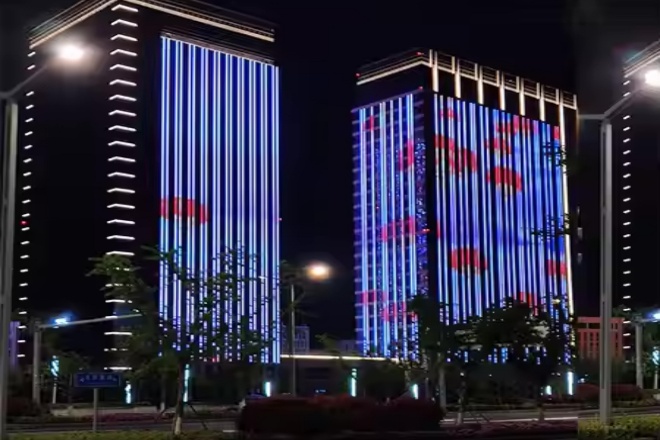
For outdoor use, LED point light source screens have slightly different factors to consider when choosing due to their special application environment and functional characteristics. The following is a detailed purchase guide:
1). Brightness and protection level
- High brightness:
The outdoor ambient light is strong, so the LED point light source screen needs to have enough brightness to ensure that it can be clearly seen in daylight. Generally, the brightness of outdoor LED displays should reach 4000cd/m² or higher.
- High protection level:
Outdoor use means facing various harsh weather conditions, such as rain, dust, high temperatures, etc. Therefore, the LED point light source screen must have a high protection level, such as IP65 or above, to ensure that it can operate stably for a long time.
2). Stability and durability
- Stability:
Outdoor LED point light source screens need to withstand the test of various harsh environments, so their stability is crucial. When choosing, you should pay attention to the product’s heat dissipation design, power management, and other aspects to ensure that it can operate properly under various conditions.
- Durability:
The outdoor environment is complex and changeable, and the LED point light source screen needs to have high durability to cope with various challenges. This includes waterproof, dustproof, corrosion-resistant, and other capabilities, as well as impact resistance and vibration resistance.
4). Color and contrast
- Color reproduction:
The color reproduction of outdoor LED point light source screens is crucial to the display effect. When choosing, you should pay attention to the color performance of the product to ensure that it can present bright and realistic color effects.
- Contrast:
High contrast can make the image clearer and the details more distinct. High contrast is particularly important in outdoor strong light environments because it helps to improve the visibility and layering of the image.
5). After-sales service and maintenance
- After-sales service:
Choose a supplier with good after-sales service so that problems can be solved in time when they are encountered during use.
- Maintenance convenience:
Consider the maintenance convenience of the LED point light source screen, such as whether it is easy to clean and whether it is easy to replace faulty parts. This helps to reduce long-term maintenance costs and improve use efficiency.
6). Cost budget
- Cost-effectiveness:
Under the premise of meeting the above requirements, choose the most cost-effective LED point light source screen according to the cost budget. Pay attention to the balance between purchase cost and long-term operating cost.
7). Notes
- Point light source characteristics:
Since the point light source screen is composed of many LED point light sources, its luminous effect is more uniform and delicate. Pay attention to this feature when choosing, and ensure that the selected product can meet actual needs.
- No refresh rate selection:
For outdoor LED point light source screens, since they are mainly used for scenes such as long-distance viewing and decorative lighting, the refresh rate parameter is usually not considered. The refresh rate mainly affects the smoothness of the picture and the shooting effect when viewed at close range.
Conclusion
In summary, point light sources embellish life with their flexibility, and LED display screens show the charm of information with dynamic pictures.
With the continuous advancement of technology, both will continue to optimize in terms of energy efficiency, cost, environmental protection, etc.
At the same time, their integration and innovation will bring a new chapter to visual art and technology applications.
Finally, if you want to know more about LED displays, please get in touch with us.
